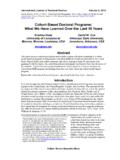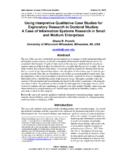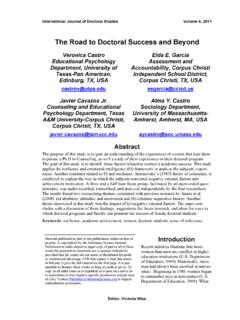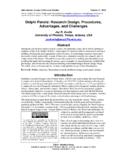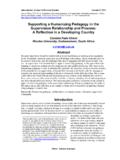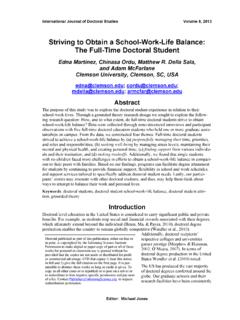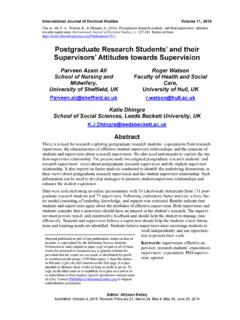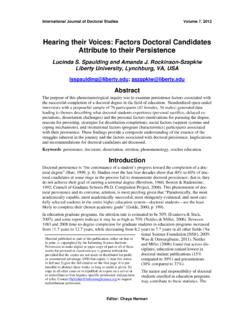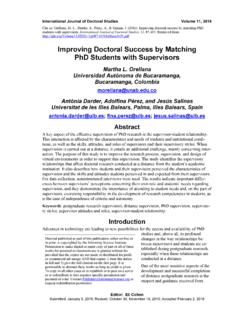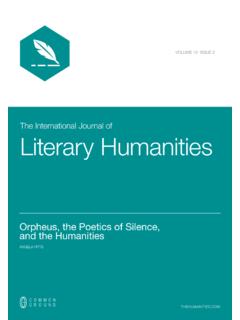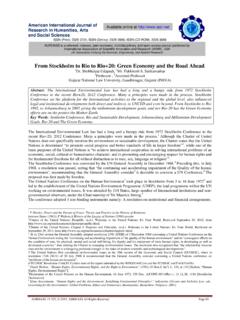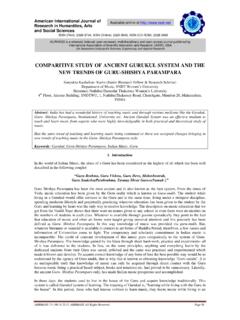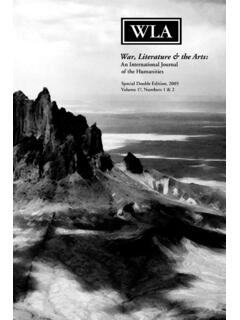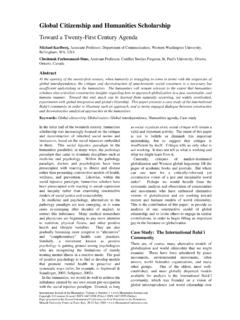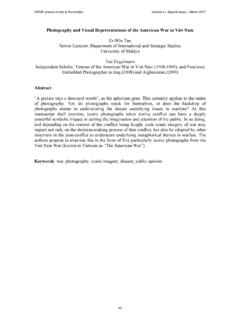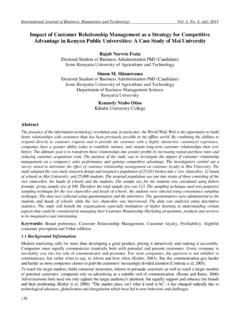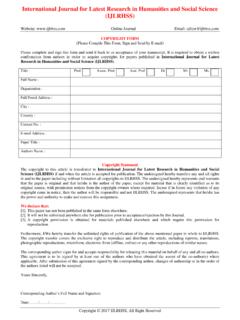Transcription of A Current View of the Thesis by Publication in the ...
1 Volume 13, 2018 Accepted by Editor Peter John Sandiford Received: December 5, 2017 Revised: February 21, 2018 Accepted: March 8, 2018. Cite as: Mason, S., & Merga, M. (2018). A Current view of the Thesis by Publication in the humanities and social sciences. international journal of Doctoral Studies, 13, 139-154. (CC BY-NC ) This article is licensed to you under a Creative Commons Attribution-NonCommercial international License . When you copy and redistribute this paper in full or in part, you need to provide proper attribution to it to ensure that others can later locate this work (and to ensure that others do not accuse you of plagiarism).
2 You may (and we encour-age you to) adapt, remix, transform, and build upon the material for any non-commercial purposes. This license does not permit you to use this material for commercial purposes. A Current VIEW OF THE Thesis BY Publication IN THE humanities AND SOCIAL SCIENCES Shannon Mason* University of Nagasaki, Nagasaki, Japan Margaret Merga Curtin University, Perth, Australia * Corresponding author ABSTRACT Background Recent times have seen an increasing pressure for Publication during candi-dature in Australian universities for a range of strategic goals that are re-sponsive to the Current academic environment.
3 Completing a Thesis by publi-cation (TBP) can further these goals, and, while this approach is no longer new, relatively little is known about its application in the context of the Hu-manities and Social Sciences (HSS). Methodology We performed an analysis of recently conferred TBPs to gain insights into the prevalence of the model in HSS, and to identify the number and nature of publications typically included in this context. Contribution Our findings can further our collective understanding of the practicalities and possibilities of the Thesis by Publication in this disciplinary context, providing valuable insights for Current and prospective research candidates in this area.
4 Findings An average of papers are included in TBPs, although there is wide range in the number and nature of papers. Of interest is the inclusion of scholarly works that are unpublished, or where the candidate is not the first author. There appears to be a heavy reliance on traditional types of scholarly publi-cations, namely journal articles and conference proceedings. Impact on Society This paper illustrates the Current status of the relatively new TBP in the HSS context and makes a contribution to a range of pertinent contemporary aca-demic debates such as authorship during candidature.
5 Future Research This paper presents a range of opportunities for further research, including investigating the characteristics of universities that effectively foster the in-clusion of publications in the HSS doctoral Thesis . Thesis by Publication in humanities and Social Sciences 140 Keywords Thesis by Publication , Publication during candidature, Thesis structure, hu-manities, social sciences INTRODUCTION The phrase publish or perish was coined in 1942 (Garfield, 1996), but it is a mantra that has be-come even more relevant in recent times in Australia, where cuts to higher education have led univer-sities to rely more on income derived from research outputs and competitive funding grants.
6 In Aus-tralia, how much money universities receive from government has depended in part on how many publica tions their academics produce (Norton, 2016, p. 39), and research outputs are seen not only as an indicator of research excellence for institutions (Australian Research Council [ARC], 2016, p. 22), but are also used to measure individual success and are necessary for job applications, internal promotions, and research funding (Brien, 2008; Dinham & Scott, 2010). While this publish or per-ish culture has faced heavy criticism in recent times for encouraging quantity over quality (Nor-ton, 2016, p.)
7 39), in the Current climate, the most prominent and powerful indicator of success in academia is the ability to write high quality academic papers that hold up to the scrutiny of peer-review for Publication in scholarly journals. This reality is becoming more intensified, and there has been a steady increase in the number of research outputs produced in Australia (ARC, 2016; Norton, 2016). Success in scholarly writing and publishing requires a constellation of skills, understandings, and dispositions too important to be left to chance (Jalongo, Boyer, & Ebbeck, 2014, p. 241). This can include selecting where to publish, writing for a specific journal audience, dealing with both positive and negative responses from journal reviewers and editors (Wilkinson, 2015), and navigating the poli-tics of publishing (Lawrence, 2003).
8 While there have been calls for issues of writing and publica-tion to be systematically addressed within doctoral pedagogy (Lee & Kamler, 2008, p. 511), many of the traditional models of supervision, in terms of time and approach, do not sufficiently facilitate the development of such skills (Poyatos Matas, 2012). international studies have shown that beginning researchers who publish during their doctoral candi-dature are more likely to have greater research productivity throughout their careers (Horta & Santos, 2015). In addition, publishing during candidature can also help research students to develop an iden-tity as a researcher, leading to them to view their research skills in a positive light (Hemmings, 2012, p.)
9 178). Publishing during candidature can be a valuable opportunity for developing a range of transferable research skills. Mastering academic journal writing has greater transferability than Thesis writing, and engaging in the Publication process can support research students to develop their au-thorial voice, receive a broad range of valuable feedback through the peer review process, and dis-seminate findings in a timely manner, as well as being responsive to the contemporary academic cul-ture ( Merga , 2015). While the common element of all approaches to doctoral study is the requirement for candidates to make a significant and original contribution to knowledge in a particular field of study, there are some major differences in approaches that have been favoured in different fields, countries, and peri-ods of time.
10 Since the introduction of the PhD award in 1948, the most commonly adopted ap-proach in Australia follows the United Kingdom model. This involves candidates working under the guidance of a research supervisor to plan and conduct a major research study, and to develop a monograph, or Thesis , reporting on that study (Group of Eight, 2013; Louw & Muller, 20 14). The Thesis is generally divided into chapters, most often an introduction, literature review, research meth-odology, findings and discussions, and conclusion chapters. Unique to Australia and New Zealand is the absence of an oral defence, or viva, common in most other parts of the world, though this is recently changing, as some Australian universities have just adopted or are considering inclusion of an oral defence as part of the doctoral examination process (University of Western Australia, 2017).
